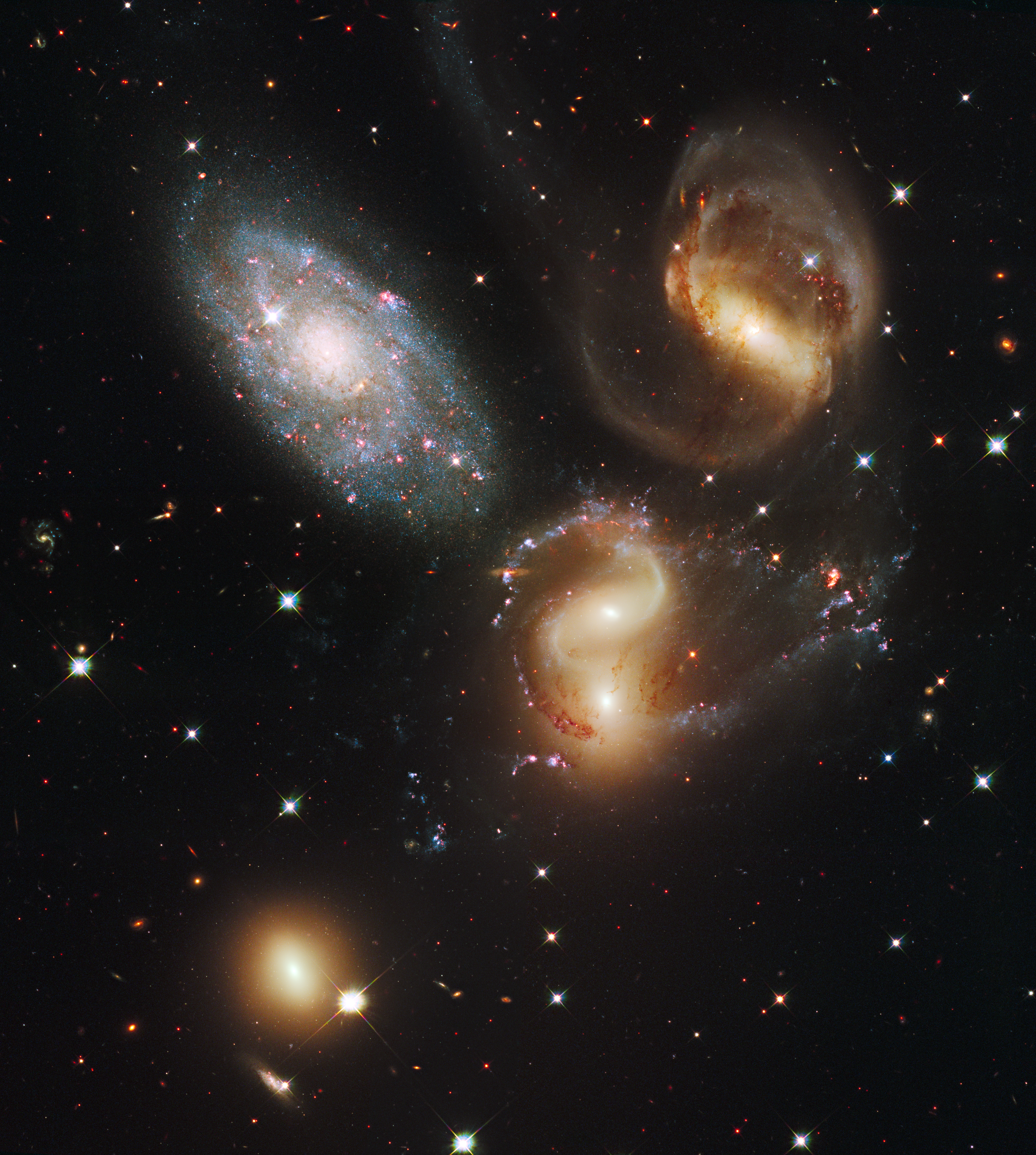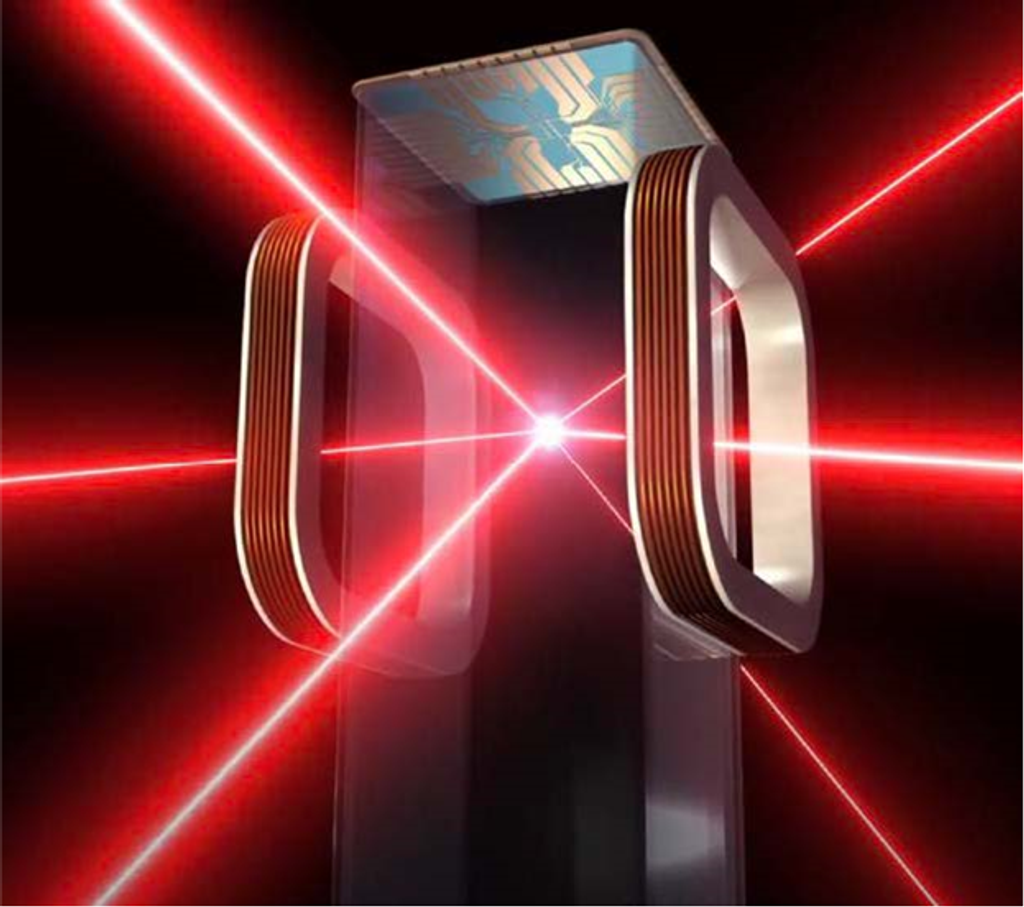
Stephan’s Quintet
This Hubble Space Telescope portrait of Stephan's Quintet, also known as Hickson Compact Group 92, seems to show a group of five galaxies. The name, however, is a bit of a misnomer. Studies have shown that group member NGC 7320, at upper left, is actually a foreground galaxy about seven times closer to Earth than the rest. Three of the galaxies have distorted shapes, elongated spiral arms, and long, gaseous tidal tails containing myriad star clusters, proof of their close encounters. These interactions have sparked a frenzy of star birth in the central pair of galaxies. NGC 7319, at top right, is a barred spiral with distinct spiral arms that extend from the ends of the bar. The blue specks in the spiral arm at the top of NGC 7319 and the red dots just above and to the right of the core are clusters of many thousands of stars. Most of the quintet is too far away even for Hubble to resolve individual stars. Continuing clockwise, the next galaxy appears to have two cores, but it is actually two galaxies, NGC 7318A and NGC 7318B. Encircling the galaxies are young, bright, blue star clusters and pinkish clouds of glowing hydrogen where infant stars are being born. NGC 7317, at bottom left, is a normal-looking elliptical galaxy that is less affected by the interactions. Sharply contrasting with these galaxies is the bluish galaxy NGC 7320 at upper left. Bursts of star formation are occurring in the galaxy's disk, as seen by the blue and pink dots. In this galaxy, Hubble can resolve individual stars, evidence that NGC 7320 is closer to Earth. This image was part of the Early Release Observations taken after Hubble's Servicing Mission 4 in 2009. For more information, visit: hubblesite.org/contents/news-releases/2009/news-2009-25.html
- X


























